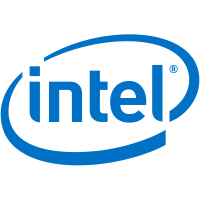Intel Arc A370M vs ATI Radeon X1950 CrossFire Edition
Comparative analysis of Intel Arc A370M and ATI Radeon X1950 CrossFire Edition videocards for all known characteristics in the following categories: Essentials, Technical info, Video outputs and ports, Compatibility, dimensions and requirements, API support, Memory. Benchmark videocards performance analysis: CompuBench 1.5 Desktop - Face Detection (mPixels/s), CompuBench 1.5 Desktop - Ocean Surface Simulation (Frames/s), CompuBench 1.5 Desktop - T-Rex (Frames/s), CompuBench 1.5 Desktop - Video Composition (Frames/s), CompuBench 1.5 Desktop - Bitcoin Mining (mHash/s), PassMark - G2D Mark, PassMark - G3D Mark, Geekbench - OpenCL, 3DMark Fire Strike - Graphics Score.
Differences
Reasons to consider the Intel Arc A370M
- Videocard is newer: launch date 15 year(s) 6 month(s) later
- 2.4x more core clock speed: 1550 MHz vs 650 MHz
- 12615.4x more texture fill rate: 131.2 GTexel/s vs 10.4 GTexel / s
- A newer manufacturing process allows for a more powerful, yet cooler running videocard: 6 nm vs 90 nm
- 8x more maximum memory size: 4 GB vs 512 MB
- Around 55% better performance in PassMark - G2D Mark: 724 vs 466
- 33.9x better performance in PassMark - G3D Mark: 5115 vs 151
| Specifications (specs) | |
| Launch date | 30 Mar 2022 vs 10 September 2006 |
| Core clock speed | 1550 MHz vs 650 MHz |
| Texture fill rate | 131.2 GTexel/s vs 10.4 GTexel / s |
| Manufacturing process technology | 6 nm vs 90 nm |
| Maximum memory size | 4 GB vs 512 MB |
| Benchmarks | |
| PassMark - G2D Mark | 724 vs 466 |
| PassMark - G3D Mark | 5115 vs 151 |
Reasons to consider the ATI Radeon X1950 CrossFire Edition
- Around 14% higher memory clock speed: 2000 MHz vs 1750 MHz, 14 Gbps effective
| Memory clock speed | 2000 MHz vs 1750 MHz, 14 Gbps effective |
Compare benchmarks
GPU 1: Intel Arc A370M
GPU 2: ATI Radeon X1950 CrossFire Edition
| PassMark - G2D Mark |
|
|
||||
| PassMark - G3D Mark |
|
|
| Name | Intel Arc A370M | ATI Radeon X1950 CrossFire Edition |
|---|---|---|
| CompuBench 1.5 Desktop - Face Detection (mPixels/s) | 167.171 | |
| CompuBench 1.5 Desktop - Ocean Surface Simulation (Frames/s) | 1470.844 | |
| CompuBench 1.5 Desktop - T-Rex (Frames/s) | 10.937 | |
| CompuBench 1.5 Desktop - Video Composition (Frames/s) | 71.258 | |
| CompuBench 1.5 Desktop - Bitcoin Mining (mHash/s) | 482.549 | |
| PassMark - G2D Mark | 724 | 466 |
| PassMark - G3D Mark | 5115 | 151 |
| Geekbench - OpenCL | 29747 | |
| 3DMark Fire Strike - Graphics Score | 3443 |
Compare specifications (specs)
| Intel Arc A370M | ATI Radeon X1950 CrossFire Edition | |
|---|---|---|
Essentials |
||
| Architecture | Generation 12.7 | R500 |
| Code name | DG2-128 | R580+ |
| Launch date | 30 Mar 2022 | 10 September 2006 |
| Place in performance rating | 333 | 357 |
| Type | Desktop | |
Technical info |
||
| Boost clock speed | 2050 MHz | |
| Core clock speed | 1550 MHz | 650 MHz |
| Manufacturing process technology | 6 nm | 90 nm |
| Peak Double Precision (FP64) Performance | 1,050 GFLOPS (1:4) | |
| Peak Half Precision (FP16) Performance | 8.397 TFLOPS (2:1) | |
| Peak Single Precision (FP32) Performance | 4.198 TFLOPS | |
| Pipelines | 1024 | |
| Pixel fill rate | 65.60 GPixel/s | |
| Texture fill rate | 131.2 GTexel/s | 10.4 GTexel / s |
| Thermal Design Power (TDP) | 35 Watt | |
| Transistor count | 7200 million | 384 million |
Video outputs and ports |
||
| Display Connectors | Portable Device Dependent | 2x DVI, 1x S-Video |
Compatibility, dimensions and requirements |
||
| Form factor | IGP | |
| Interface | PCIe 4.0 x8 | PCIe 1.0 x16 |
| Supplementary power connectors | 1x 6-pin | |
API support |
||
| DirectX | 12 Ultimate (12_2) | 9.0c |
| OpenCL | 3.0 | |
| OpenGL | 4.6 | 2.0 |
| Shader Model | 6.6 | |
| Vulkan | ||
Memory |
||
| Maximum RAM amount | 4 GB | 512 MB |
| Memory bandwidth | 112.0 GB/s | 64.0 GB / s |
| Memory bus width | 64 bit | 256 Bit |
| Memory clock speed | 1750 MHz, 14 Gbps effective | 2000 MHz |
| Memory type | GDDR6 | GDDR4 |










